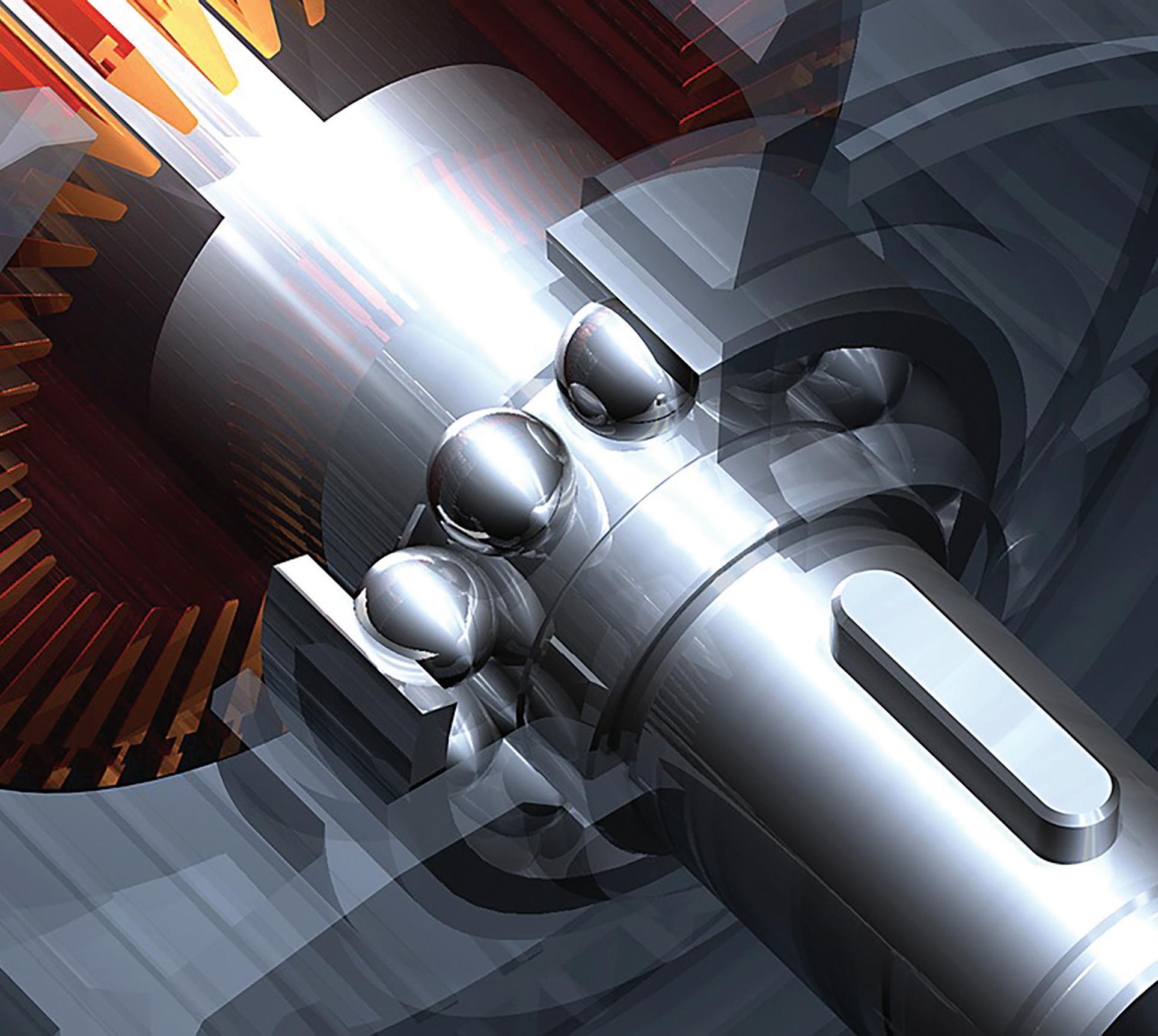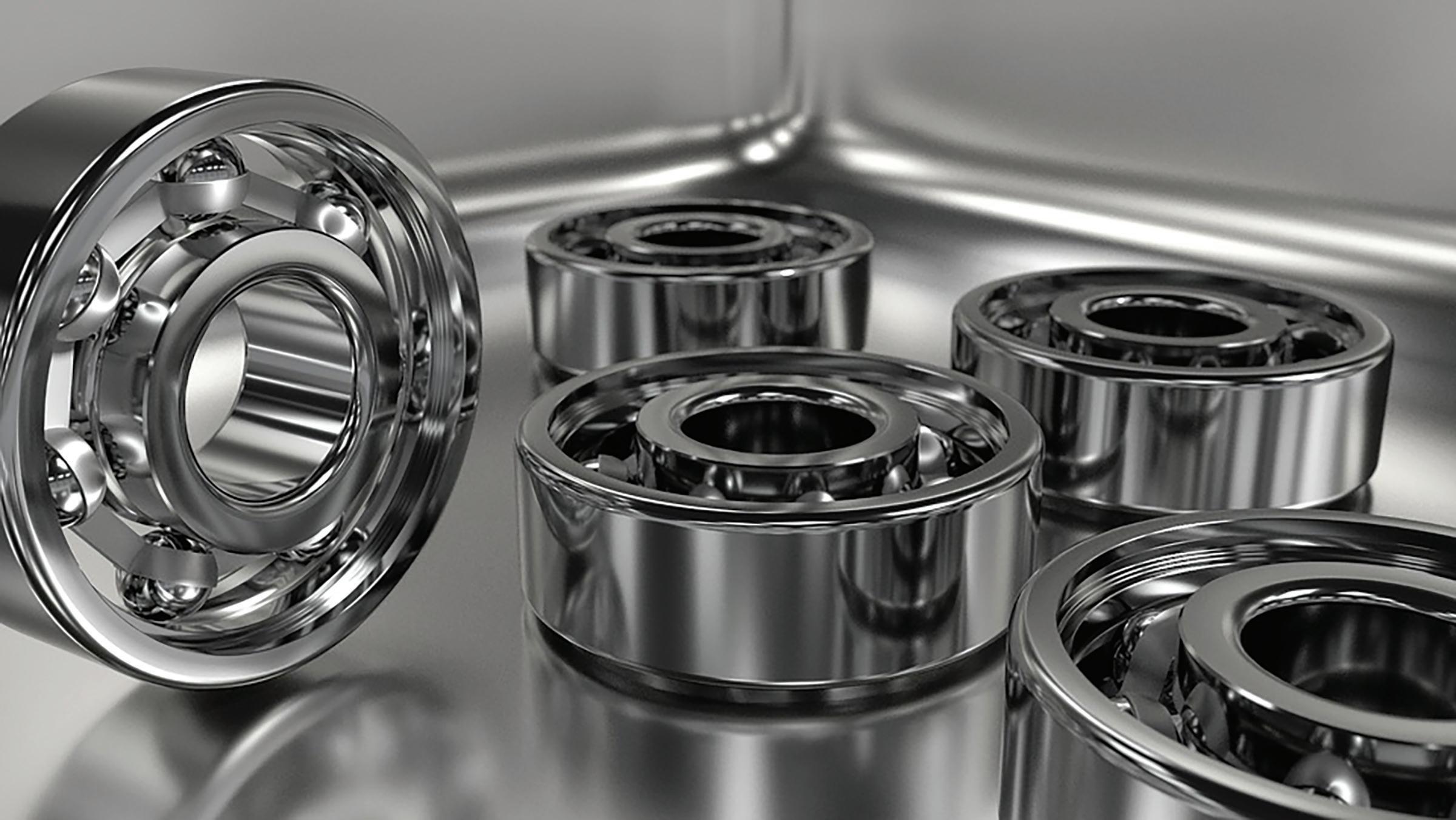
5 minute read
MECHANICAL
M e c h a n i c a l • • • • • • • • • • • • • • • • • • • • • • • • • • • • • • • • • • • • • • • • • • • • • • • • • • • • • • • • • • • • • • • • • • • • • • • • • • • • • • • • • • • • • • • • • • • • • • • • • • • • • • • • • • • • • • • • • • • • • • • • • • • • • • • • • • • • • • • • • • • • • • • • • • • • • • • • • • • • • • • • • • • • • • • • • • • • • • • • • • • • • • • • • • • • • • • • • • • • • • • • • • • • • • • • • • • • • • • • • • • • • • • • •
How vibration analysis
keeps your bearing system steady Implementing condition monitoring can reduce the frequency and cost of equipment maintenance. Edited by Mike Santora Specifi cally, vibration analysis can provide valuable insight into machine condition, fl agging up problems before extensive damage occurs. Chris Johnson, managing director of ball bearing supplier SMB Bearings, explains the steps machine builders should take to reduce the likelihood of bearings being the root cause.
With large numbers of rolling elements in industrial machines, it can be challenging to decipher precisely what is happening inside a unit. Condition monitors often use accelerometers to measure vibration. With this device, it is possible to differentiate between vibrations by examining the individual frequencies present in the overarching vibration signal. These frequencies can then be used to match individual parts or certain malfunctions.
This analysis can warn of faults well before failure. In the case of bearings, it is possible to detect excessive rolling element wear or damage due to poor fitting techniques, highlighting the need for bearing replacement. The alternative would be to allow the bearing to deteriorate further, which could potentially cause other components to fail.
M e c h a n i c a l
Other problems that vibration analysis can detect are misalignment, lubricant problems, or incorrect shaft or housing fi ts. With early detection, it may be possible to rectify these issues well before costly bearing failure. As a safety net, regular vibration analysis can be used to confi rm bearing condition and prevent catastrophic failure. However, if the proper precautions are taken to lessen bearing vibration during machine design and bearing selection, the likelihood of faults is greatly reduced.
Expert manufacturing
From a bearing manufacturing perspective, a low noise or vibration rating is achieved by paying attention to the surface fi nish of the raceways and balls, their roundness, and selecting the correct cage design. Finely fi ltered low noise greases can also be used to reduce vibrations. These contain fewer, small solid particles which can generate noise when they pass between the balls and raceway.
Prevent contamination
Accidental dirt or dust contamination can also increase noise and vibration levels, as this inevitably a ects the rollability of the bearing. Bearing shields or, even better, contact seals are a good solution to this problem.
Choose the right lubrication
To maintain rollability, it is vital that bearings are lubricated su ciently and to a suitable fi ll level dependent on torque, speed, and load requirements. Equally, the type of lubrication should be carefully considered for the application, based on temperature, speed, and environmental conditions. If bearings are inadequately lubricated or fi lled with an incorrect grease, manufacturers should contact a bearing supplier to inquire about bearing relubrication.
The bearing’s internal clearance can make a big difference. Choose tighter clearances for accurate running but beware of any temperature differences that reduce internal clearances during operation.


M e c h a n i c a l
ERT®
Edge Roller Technology
NEW BELTLESS CONVEYOR FOR SMALL AND LIGHT-LOAD ASSEMBLY AUTOMATION
Cleanroom Ready Conveyors

The ERT platform is the only pallet conveyor of its kind available with an ISO Standard Class 4 rating for cleanroom applications.

See our conveyors in action: www.dornerconveyors.com Call us: 800-397-8664
Pay attention to radial play
The bearing’s internal clearance can make a big di erence. Choose tighter clearances for accurate running but beware of any temperature di erences that reduce internal clearances during operation. Choose looser clearances where interference fi ts are used, or there is slight misalignment between shaft and housing.
Keep to load limits
As tempting as it may be, end-users should avoid using a bearing close to its maximum load capacity. Bearing load ratings are only a guide. Bearings should be used at around a tenth of the dynamic load rating if long life is required. Heavier loads can be tolerated, but the bearing lifespan will be shortened, as identifi ed later by vibration analysis.
Handle with care
Fitting the bearing inner ring onto a shaft by pressing on the outer ring transfers the fi tting force via the balls, which will damage the raceways. Similarly, a heavy shock load can occur when the bearing is dropped onto a hard surface which can also cause damage, leading to high levels of vibration. Condition monitoring is becoming more prevalent, and this technology allows for early identifi cation of bearing problems but, by taking precautions to prevent issues arising in the fi rst place, machine builders can ensure their bearings are fi tted to last. DW
SMB Bearings smbbearings.com






